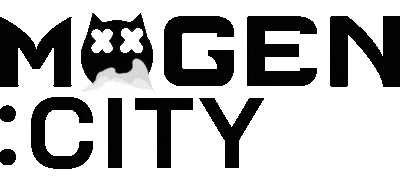Introduction: From Scroll to Sovereignty
Gen Z is tired — tired of algorithmic timelines, data mining, shadowbans, and the suffocating grip of Big Tech. They’re not just logging off — they’re migrating. Welcome to the rise of decentralized social media, where Gen Z is reclaiming control of their digital identities, feeds, and friendships.
This isn’t just a rebellion against Meta, X, or TikTok. It’s a movement grounded in privacy, autonomy, and Web3 values, where users own their content, data, and sometimes even the platforms themselves. In this article, we’ll explore why Gen Z is abandoning Web2’s walled gardens and planting flags in the wild frontier of decentralized social.
1. The Problem with Web2: Big Tech’s Broken Promises
Gen Z was born into social media — but they’ve grown skeptical:
- Data surveillance: Platforms profit from personal info.
- Censorship and shadowbans: Especially around politics and marginalized communities.
- Algorithmic manipulation: Engagement over empathy; virality over value.
- Platform monopolies: Few companies own the entire digital conversation.
These issues aren’t just annoying. They feel existential to a generation raised on digital self-expression.
2. What Is Decentralized Social Media?
At its core, decentralized social media means:
- No central authority: No single company controls your data or feed.
- Open-source protocols: Anyone can build apps or interfaces.
- On-chain identity and content ownership: Users truly “own” their digital presence.
Think of it as the difference between renting a room on Facebook vs. building your house on Lens Protocol or Farcaster.
3. The Platforms Leading the Charge
| Platform | Tech Base | Gen Z Appeal |
|---|---|---|
| Lens Protocol | Polygon (Ethereum) | Tokenized follows, content ownership, profile NFTs |
| Farcaster | Optimism (Ethereum) | Fast, Web2-like UX with Web3 backend |
| Mastodon | Fediverse | Federated servers, customizable moderation |
| Bluesky | AT Protocol | Built by Twitter’s founder, decentralized identity |
| Nostr | Bitcoin-adjacent | Extreme decentralization, censorship-resistance |
These aren’t clones of Instagram or Twitter — they’re experiments in community-powered platforms.
4. Why Gen Z is Jumping Ship
- Digital sovereignty: Own your data, followers, and content.
- Monetization freedom: Creators can embed tipping, token rewards, or gated content.
- Censorship resistance: No invisible hand deleting your posts.
- Cool factor: Early adopter status, Web3-native clout, and vibes that feel fresh.
It’s not just tech — it’s a cultural rejection of control.
5. Identity and Anonymity in Decentralized Spaces
Gen Z plays with identity:
- Multiple wallets = multiple personas
- Some use ENS (Ethereum Name Service) or Lens handles for continuity
- Others stay pseudonymous for privacy and creative freedom
Decentralized platforms respect that fluidity — and even encourage it.
6. Community First, Clout Second
Unlike Web2, where influencers chase engagement:
- Web3 social rewards participation over perfection
- Reputation = wallet history, community votes, contributions
- You don’t need a blue check — just an on-chain resume
The culture skews collaborative, niche, and unfiltered — a vibe Gen Z resonates with.
7. Tokenized Social: Where Likes Become Assets
In decentralized social:
- Your followers are portable — not locked into one platform
- You can sell or trade content as NFTs
- Some platforms let you earn tokens for posting (e.g. DeSo, DiamondApp)
It’s a shift from attention economy to ownership economy.
8. Challenges to Overcome
It’s not all frictionless:
- UX complexity: Wallets, gas fees, keys — it’s still geeky
- Network effects: Friends are still on Instagram
- Spam/scams: Moderation is decentralized too
- Platform fragmentation: No universal feed yet
But Gen Z is willing to trade convenience for control — and pushing devs to fix these hurdles.
9. The Cultural Vibe: Crypto-Punk Meets Cottagecore
Decentralized social is weird — and that’s why Gen Z loves it:
- Posts range from DeFi tips to frog memes to DAO governance polls
- Feeds feel experimental, chaotic, and refreshingly not optimized
- Identity is a mashup of PFPs, vibes, and pseudonym handles
It’s less “brand-building” and more community-forging.
10. What’s Next: The Social Internet, Rewritten
- AI-generated content wallets that curate feeds based on DAO preferences
- Modular media protocols where users can “fork” their own version of Twitter
- Decentralized identity passports that carry reputation cross-platform
- Creator-owned platforms funded by token communities
In the next wave, you won’t join social media — you’ll co-create it.
Conclusion: From Users to Builders
Gen Z isn’t waiting for Big Tech to fix social media. They’re leaving.
In its place, they’re building decentralized networks that reward honesty over clicks, communities over virality, and creators over corporations.
The future of social isn’t owned by Silicon Valley — it’s co-owned by everyone.
And for Gen Z? That’s exactly the point.
Ditching Big Tech: Gen Z’s Migration to Decentralized Social Media
The content, Ditching Big Tech: Gen Z’s Migration to Decentralized Social Media, published on Mugen:City is for informational and entertainment purposes only.
We do not offer financial advice, investment recommendations, or trading strategies.
Cryptocurrencies, NFTs, and related assets are highly volatile and risky — always DYOR (do your own research) and consult with a professional advisor before making any financial decisions.
Mugen:City, its writers, and affiliates are not responsible for any losses, damages, or financial consequences resulting from your actions.
You are fully responsible for your own moves in the degen world. Stay sharp, stay rebellious.





